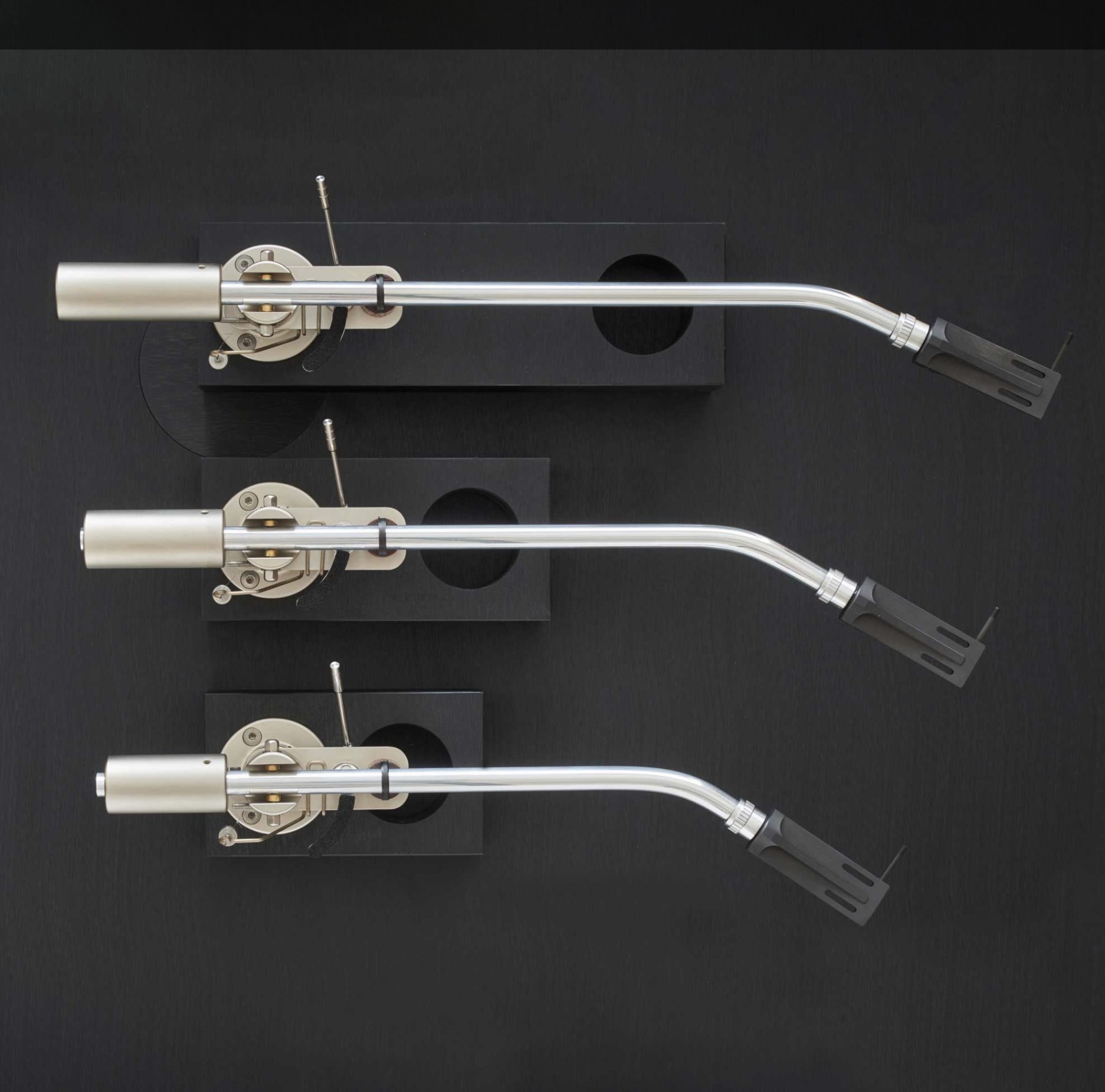




THOMAS SCHICK 12 INCH TONEARM (SCHICK 12)
Introduction
Vinyl records are still very popular as a sound source, although there are several digital formats that claim to deliver the ultimate sound, whatever that is. For whatever reasons the vinyl LP is so popular, if you’re reading this it seems like being a topic for you.
It is astonishing that many turntables from the 1960s, or even older ones, are still the first choice for high quality record playback today. These old devices are still in use today because of their outstanding sound quality, which even today is only achieved by a few devices.
In the case of tonearms, old copies are often afflicted with considerable defects, as I unfortunately had to find out myself. A reason for me to start my own development. First I thought about general sound ideals.
Two main ideals of sound seem to have become established. First there is the sound lover who prefers a ‘warm, romantic, pleasant’ reproduction. The tone color is important here, frequency range or colorations are accepted as long as nothing ‘annoying’ appears in the sound image. On the other hand, there is the ‘lover of detail’, here there must be a clinically clean resolution of the sound, even if the naturalness is lost.
(Of course the boundaries are fluid, only the extremes are listed here)
Usually both types are bought with serious compromises. The pleasant sound is often perceived as dull, two-dimensional and not very vivid. The detailed ideal often has a bright, unnatural touch.
The best of both worlds
How can you combine the advantages of pleasant AND detailed sound?
In order to keep the level of detailed information high, the tracking information of the cartridge should ot be compromised by movements in the tonearm.
The pleaseant sound can be preserved by careful choice of materials. The simple looking armtube consist of 9 parts inside alone to treat resonances and engergies, sent there by the cartridge.
A precise tonearm with ball bearings and stable axis guidance was the solution for me.
The alternative
Ball bearings are very popular in tonearm design and are used quite often. Today, high-tech manufacturing processes allow bearings with very low tolerances. The bearings in the Schick arms have a 0 µm positive tolerance and 7 µm negative tolerance. This means that there may only be a maximum of 7 µm small ‘holes’ in each ball respectively to its race. However, there are many balls in the bearing, so the probability that several deviations form this 7 µm clearance at the same time is very low. This principle results in a connection that is practically free of play. Leaving enough ‘air’ of course to rotate freely.
This low tolerance has other properties that are advantageous when building the tonearm: Low running noise. Running noises are undesirable. In the form of resonances, they also contribute to the loss of information. The low tolerance of the polished raceways and balls as well as a synthetic lubricant ensure the lowest possible running noise. It is possible to buy bearings that look very similar for a small price, but the low quality can be heard directly. When turned close to the ear, cheap bearings generate noise. You can hear the metallic crunching noises of a brand-new, perfect bearings! Nothing you want in the sound of your turntable system.
For example, turn the vertical axisof an old tonearm and you’ll know what I’m talking about.
Low tolerance and a smooth surface have another advantage. A low breakaway torque.
The mechanical force to set the bearing in motion at all is very low, so the pickup can better. The extremely smooth surface also keeps rolling friction very low, not least thanks to the special synthetic lubricant. A normal ball bearing grease would act like glue here.
One more word about durability. These bearings are specified for extremely high speeds, something that is not found in tonearm life, but this guarantees an extremely long life of several decades.
Material selection
Apart from the movable axes of the tonearm, the choice of material also plays an important role. Metal is a good resonator, which is bad at first. But metal parts that are mechanically connected to each other hardly resonate anymore. In Schick tonearms, the headshell construction takes over this function, among other things. The contact area between the arm and the headshell plug very effectively reduces the resonance. The same goes for the axis through the arm and the counterweight. All elements are connected to one another to reduce resonance.
Special attention was paid to the damping of the tonearm tube. Here 3 different materials in 9 sections are used to optimize the resonance behavior. Optimal does not mean absolute ‘dead’ (overdamping), but rather using it in the right place, in the right amount.
Conclusion
Although these factors are theoretically known, in reality they are not applied to most tonearms on the market. If so, you can find them in, let’s say, not exactly cheap tonearms. Many new tonearm designs also do not allow the use of heavy cartridges.
Against the trend towards mass-produced goods, outsourcing and production in low-cost countries, mytonearms are completely handmade in Germany.
I would be happy to make one for you too.
The tonearm is available in three finishes to choose from:
Gold
Silver, matte finish
Black, matte finish
12 inch version or shorter 9 inch (9,6inch). The shorter version is a drop in replacement for EMT record players as well.
The tonearm includes a lift and arm bench, as well as fixed lowest resistance and capaticance, symetrical cable with Neutrik RCA plugs.
The cable is 1.1m long.
Choice of a Schick 5 pin tonearm connector with Teflon isolation and electronic test pins.
All tonearms are equipped with an Antiskating mechanism.Alla rms are delivered with two weights.
The tonearm is suitable for any cartridge from about 6 Gramms and a compliance value of below 20 µm/mN (22 for the 9 inch version).
That includes most cartridges on the market, excluded are only lightweight and very soft MM systems.Headshell not included